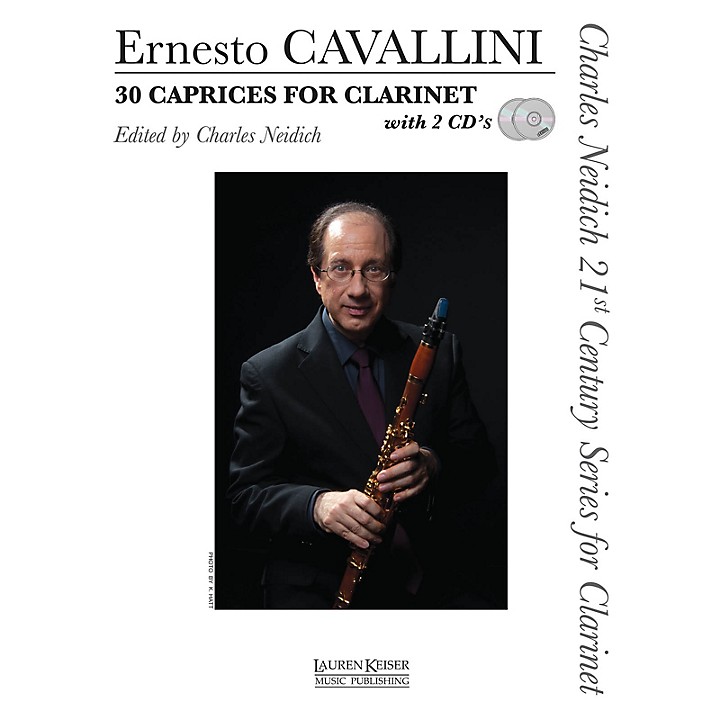Called the Paganini of the clarinet by the English clarinet virtuoso, Henry Lazarus, Ernesto Cavallini was a respected friend and colleague of the most important Italian composers of his day, including Rossini, Donizetti, and Verdi.
From 1831 to 1851 he was principal clarinetist of La Scala. During that time he also toured extensively throughout Europe. In 1862, Anton Rubinstein appointed Cavallini to be the first clarinet professor of the St. Petersburg Conservatory, a position which he held until he left Russia to return to Milan in 1870. Cavallini wrote his 30 Caprices in five volumes, each including pieces for both technical and musical study.
He was intensely interested that the Caprices be not merely technical exercises, but studies in style and phrasing: an introduction to the new expressive force of the new music of his time. With this in mind, he made numerous expressive indications in his etudes which went beyond the standard markings of crescendo, diminuendo, accelerando, ritardando.
These markings have been restored in this edition and also include translations at the end of the volume. The noteworthy feature of this edition is the recording included with Charles Neidich's performances of the Caprices. Rather than clutter Cavallini's already expressively notated scores with still more markings, this edition offers the recording as a window into the bel canto style of the etudes and as models of the kind of performance to which the student should aspire.
From 1831 to 1851 he was principal clarinetist of La Scala. During that time he also toured extensively throughout Europe. In 1862, Anton Rubinstein appointed Cavallini to be the first clarinet professor of the St. Petersburg Conservatory, a position which he held until he left Russia to return to Milan in 1870. Cavallini wrote his 30 Caprices in five volumes, each including pieces for both technical and musical study.
He was intensely interested that the Caprices be not merely technical exercises, but studies in style and phrasing: an introduction to the new expressive force of the new music of his time. With this in mind, he made numerous expressive indications in his etudes which went beyond the standard markings of crescendo, diminuendo, accelerando, ritardando.
These markings have been restored in this edition and also include translations at the end of the volume. The noteworthy feature of this edition is the recording included with Charles Neidich's performances of the Caprices. Rather than clutter Cavallini's already expressively notated scores with still more markings, this edition offers the recording as a window into the bel canto style of the etudes and as models of the kind of performance to which the student should aspire.

